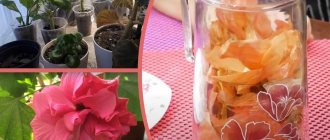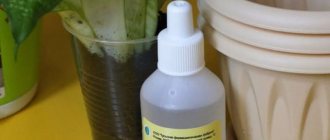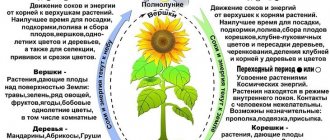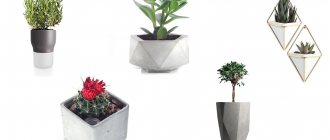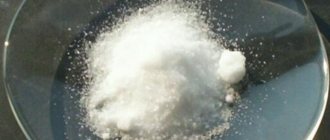How do fertilizing work in the fall?
The task of spring and winter fertilizing is different. In the spring, fertilizers are necessary to stimulate the growth of indoor plants, and in the fall, nutritional complexes are added to strengthen the immune system, restoring the strength spent on the phase of active growth and preparing the crop for wintering.
REFERENCE! The timing of fertilizing is also important, since its effectiveness depends on it.
Timing of autumn feeding
Crops that go into a full dormant period do not need autumn feeding. Usually these are beautifully flowering or woody crops, as well as those that shed their leaves or the entire ground part in the winter.
It is impossible to say unambiguously about the time of applying autumn fertilizing for all indoor plants. Each variety has its own preferences in the timing and composition of fertilizers. On average, fertilization begins in the second half of September and lasts until the end of December.
Basic elements necessary for normal plant development
To decide on the necessary elements in the autumn, you need to know their purposes. For example, nitrogen stimulates the growth of green mass of plants, so it should be abandoned in the fall.
Before winter, crops need potassium and phosphorus more, as well as micro- and macronutrients.
Organics in autumn
Organic fertilizers are slow-release fertilizers. They are aimed at improving the biochemical parameters of the soil. Good fertilizers for indoor plants are the following:
- ash - an excellent nutritional composition can be obtained by burning potato tops or branches of garden crops;
- bone meal - for a positive effect it is needed in minimal quantities;
- peat - gives the soil looseness and retains moisture in it;
- chicken manure - applied only in diluted form.
Thermal mode
Now about the thermal regime. The attitude of indoor flowers to temperature depends on the type of plant. For example, aloe, aspidistra, aucuba; Dracaena, lemon, zygocactus, ficus are indifferent to temperature, they tolerate any temperature. Heat-loving plants - royal begonia, anthurium, saintpaulia (Uzambara violet) - love elevated temperatures (15 degrees or more). Geraniums, hydrangeas, camellias, primroses, roses, and fuchsias enjoy coolness during this period. Cyclamen do not tolerate room heat at all. Consider these preferences of your indoor plants!
Flower growers should remember that on the windowsill, closer to the glass, the temperature is always 4-5 degrees below room temperature.
All flowers do not like drafts. When ventilating the room, cover them with newspapers. You can also make a permanent visor on the window.
Rules for autumn-winter feeding
The following recommendations will help maintain the beauty of indoor flowers throughout the autumn-winter period:
- From mid-November, the frequency and concentration of fertilizing should decrease by 2-3 times. From February, food becomes plentiful again - it is important to nourish the crop for spring awakening.
- When choosing a fertilizer, it is better to give preference to complex fertilizers, but without nitrogen in the composition (or with a minimum content of it).
- If the plant has not yet stopped blooming in the fall, then there is no need to reduce the frequency or amount of fertilizer. In this phase, flowers still need active nutrition.
- Apply any fertilizer to well-moistened soil.
- In the cold season, it is better to add a reduced dose of nutrients than an excessive one. This rule applies to all indoor plants.
Folk remedies
If you are an ardent opponent of chemistry and prefer to feed your home flowers with natural fertilizers, you can prepare them from granulated sugar, coffee, iodine, succinic acid (tablets), yeast, ash, vegetables and fruits.
You will be interested to know: Urea for root feeding of seedlings: how to dilute and water seedlings at home
Read recipes for folk remedies here.
In winter and spring, it is not recommended to water flowers with a solution of yeast and sugar. Yeast and glucose activate growth, which is contraindicated for many plants in the autumn and winter. Due to the short day and lack of light, they will simply begin to stretch out.
Other folk fertilizers can be used in autumn and winter, reducing their dose and frequency of use by approximately half.
By the way! Hydrogen peroxide is very useful for home flowers at any time of the year. Follow the link to find out how to prepare a solution and use hydrogen peroxide.
The best fertilizers for flowers and the technology for their use
Organic matter
When using organic matter, you should be as careful as possible, since an incorrectly selected concentration of fertilizers can cause more harm than adding chemicals.
In order not to make a mistake in the proportions when preparing a nutritional complex, it is better to purchase ready-made organic matter. It is prepared using a special technology from bird droppings or manure, as well as products from animal slaughter and food industry waste.
Along with store-bought organics, there are also detailed instructions for its use. Experienced gardeners recommend slightly reducing the recommended concentration and dosage.
REFERENCE! The main advantage of organic matter is that it not only provides the plant with nutrients, but also improves the composition and structure of the soil.
Mineral fertilizers
Ready-made mineral compositions are also sold at any flower shop. They come in liquid, granule, stick and powder form. You can choose a fertilizer with a single composition or a whole complex of components.
The main advantages of mineral fertilizers are ease of preparation and use, as well as the speed of their impact on the crop.
The benefits of indoor plants for humans
All indoor plants produce oxygen, humidify the air in our homes, and have a bactericidal effect. For example, after 3 weeks of staying in a room with a Chinese rose, sansevieria, bay laurel or lemon, it is almost completely cleared of most pathogenic microbes.
In any apartment, the cleanliness of the air is also far from desired. Modern paint and varnish coatings on furniture, rugs, and various synthetic products significantly pollute the surrounding air with their fumes. When using natural gas during cooking, large amounts of carbon monoxide and nitrogen dioxide are released. Tobacco smoke also contributes to air pollution. All this makes us think about cleaning the air in apartments, especially in the winter months, when in order to preserve heat, living spaces are practically deprived of natural air exchange.
The real champion among “natural filters” is Chlorophytum crested, a native of South Africa. It has been experimentally proven that if you place 5-6 such plants in a room, the purity of the air in it will approach the air of a hospital operating room.
Autumn houseplant care may be a little more challenging than other times, but it's worth it!
Source: smoldacha.ru
Homemade flower food
Yeast
You can use both dry and live yeast. To prepare live yeast, 200 g are diluted in a liter of water, placed in a warm place and infused for 2-3 hours. After this, the infusion will need to be diluted with ordinary water in a ratio of 1:10, after which it can be used for any indoor plant.
Dry yeast is taken in a volume of 10 g and diluted in 10 liters of water, adding 4 tablespoons of sugar to the mixture. The mixture should infuse for at least an hour, then it is diluted with water in a ratio of 1:5.
Coffee grounds
After preparing a coffee drink, do not throw away the grounds. It can be put to good use by adding it to the soil. You should not expect that the grounds will saturate the plant with any useful elements. This manipulation is rather aimed at improving the looseness of the soil, so that it will better allow air and water to pass through.
Tea brewing
To feed indoor plants, it is recommended to take large-leaf tea. Tea leaves are used in the same way as coffee grounds - after drinking the tea, place the leaves in a flowerpot, deepening them a few centimeters. When decomposed, the tea leaves will release manganese, iron, potassium and calcium.
You can also pour unfinished tea into a pot with a plant (only if it was brewed from good fresh leaves). The procedure can be performed up to 4 times a week.
Aquarium water
Many gardeners recommend using drained aquarium water for watering indoor plants. Abundant nutrition of crops is ensured due to the presence of microorganisms and chemical elements in such water.
REFERENCE! The properties of aquarium water are similar to river water, so the plantings begin to actively develop.
Aquarium water should be used without sediment. If there is one, it is better to strain the liquid. The frequency of the procedure is once a week.
Sugar
Sugar can be used in two ways:
- Dilute a tablespoon of sand in a liter of water and pour the mixture over the crop.
- Pour sugar onto the surface of the soil (at the rate of a teaspoon per 10 cm of pot diameter), and then moisten the substrate until the sugar is completely dissolved.
REFERENCE! You can replace sugar with glucose - 1 tablet is dissolved in a liter of settled water.
Onion peel
A product made from onion peels perfectly protects indoor plants from diseases and pests. A handful of husks is poured with a liter of water and placed on low heat. The solution is boiled for 10 minutes, and then infused in a closed container for another 3 hours. After cooling, the liquid is filtered, and then only the top layer of soil is sprayed with it.
It is recommended to use the tincture twice a month.
Eggshell
Algorithm for using eggshells:
- It is better to collect shells from raw eggs; it is advisable to keep them whole.
- Rinse and immediately dry the collected shells.
- Then place them in a closed container and fill with water, leave for 3-4 days (shake the container daily).
- The readiness of the infusion will be indicated by the foam on its surface.
- All that remains is to dilute the solution with clean water in a ratio of 1:5 and use it to water the flowers once a week.
ATTENTION! When the shells are infused, the liquid may acquire an unpleasant odor. But if you rinse the components well first, it will be almost invisible.
Pharmacy flower food
Aspirin
The drug activates the plant’s immunity, protecting it from fungal diseases and some types of pests. To prepare a solution for irrigation, a quarter of an acid tablet is dissolved in two liters of water.
You can water the plants with this mixture every week.
Vitamin B12
One ampoule of the vitamin is diluted in a liter of water. Approximately 100 ml of the prepared solution is added to each pot every two weeks. After such feeding, the leaf plates acquire a more saturated color, and the buds subsequently grow larger.
Castor oil
The product helps even a weak or disease-affected plant to bloom. Add a teaspoon of oil to a liter of water, mix well and use the mixture to water the plants at intervals of 5-7 days.
Ammonia
Typically, ammonia is used if indoor plantings begin to wilt. Alcohol can disinfect the substrate and destroy pests and fungal diseases in it.
A teaspoon of alcohol is diluted in a liter of water. To revive the plant, this feeding twice a month is enough.
Is it worth feeding indoor plants in winter?
In the autumn-winter season, most plants begin a dormant period. The condition of indoor flowers deteriorates due to lack of sunlight and low humidity in the room. Many of them begin to get sick during this period, lose their foliage, and do not bloom after the onset of spring. Leaf wilting and leaf spots are often signs of nutrient deficiency. To improve their health, feeding and replanting are necessary.
